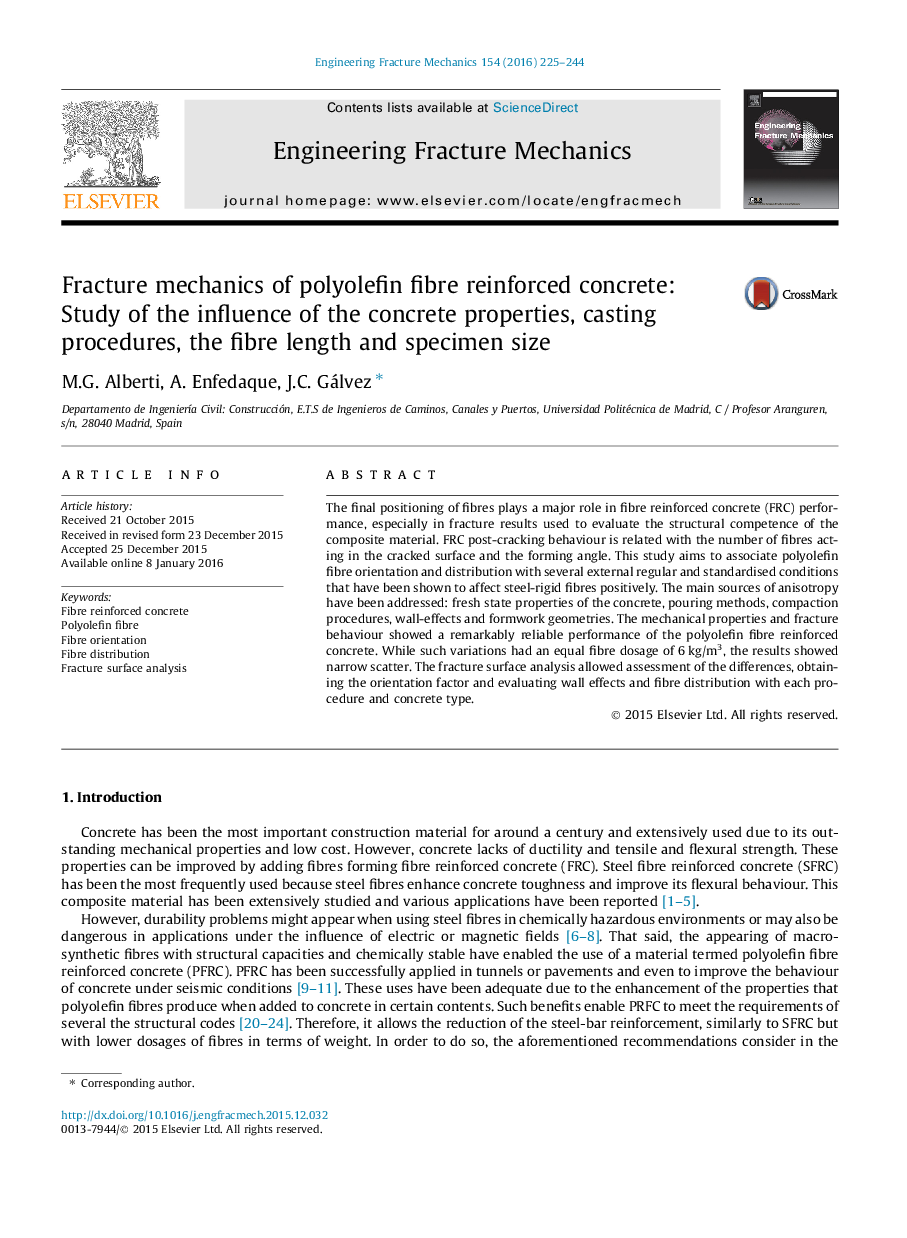| Article ID | Journal | Published Year | Pages | File Type |
|---|---|---|---|---|
| 766168 | Engineering Fracture Mechanics | 2016 | 20 Pages |
•Production methods affect fibre positioning and thus influence residual strengths.•Effect of fresh state, pouring and mould sizes in fracture behaviour was assessed.•The use of two fibre lengths had minor effects on the fracture behaviour of PFRC.•The counting exercises revealed the significant influence of the pouring methods.•Wall effect improved the orientation factor when smaller sizes were studied.
The final positioning of fibres plays a major role in fibre reinforced concrete (FRC) performance, especially in fracture results used to evaluate the structural competence of the composite material. FRC post-cracking behaviour is related with the number of fibres acting in the cracked surface and the forming angle. This study aims to associate polyolefin fibre orientation and distribution with several external regular and standardised conditions that have been shown to affect steel-rigid fibres positively. The main sources of anisotropy have been addressed: fresh state properties of the concrete, pouring methods, compaction procedures, wall-effects and formwork geometries. The mechanical properties and fracture behaviour showed a remarkably reliable performance of the polyolefin fibre reinforced concrete. While such variations had an equal fibre dosage of 6 kg/m3, the results showed narrow scatter. The fracture surface analysis allowed assessment of the differences, obtaining the orientation factor and evaluating wall effects and fibre distribution with each procedure and concrete type.
Graphical abstractFigure optionsDownload full-size imageDownload as PowerPoint slide
